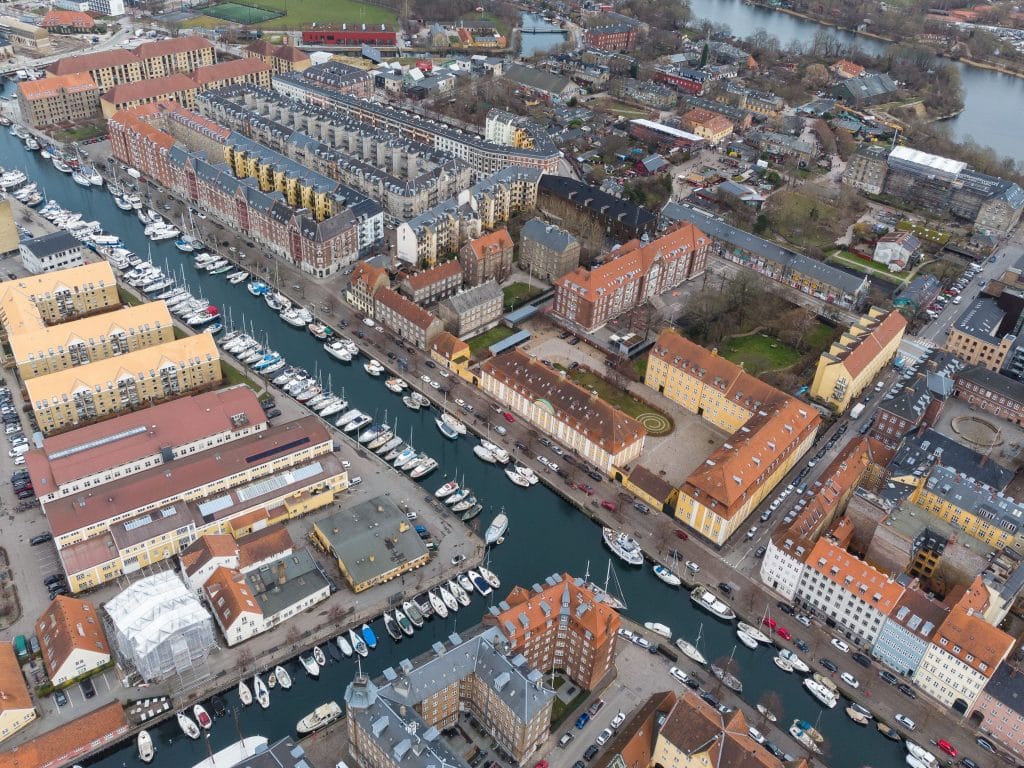Denmark isn’t the most liberal country when it comes to weed, but that doesn’t mean it’s not moving progressively. Recent data from the country shows a rising medical cannabis industry, with huge growth within the last five years. How much of this is related to the Denmark medical cannabis pilot program, instituted in 2018? And why does it look like the government might be interfering with the program’s progress?
Cannabis laws in Denmark
In Denmark, the sale and production of recreational cannabis is illegal. Cannabis laws are governed by the Consolidated Act on Controlled Substances, which was instituted in 2016. It’s illegal to do any of the following: importing/exporting, sale/receipt/purchase, production/processing, cultivation, and possession. Use is the only part not mentioned, but it’s hard to use something you can’t obtain.
Breaking the law can result in fines, and prison time up to two years for smaller crimes. Most law enforcement only give a fine for small amounts. However, when a certain quantity of an illegal drug is transferred (for cannabis its 10kg), or there’s expected intent to transfer, it gets enforced under section 191 of the country’s criminal code as a trafficking crime. This can result in prison sentences of 10 years, but can go as high as 16 years.
Denmark did make a medical allowance back in 2011. It allows for pharma medications like Sativex, Marinol and Nabilone, the three of which were approved in 2011, and require a prescription. The allowance does not account for the actual plant, though. And in order to get your hands on flower, you can only do that in Denmark via its medical cannabis pilot program, which started in 2018. The pilot program was initially scheduled for four years, but Denmark since lengthened it to go to 2025.
Welcome everyone. You may subscribe to the Cannadelics Weekly Newsletter for all updates; and to get access to tons of promos on cannabis flowers, vapes and smoking equipment, edibles, cannabinoid compounds (including delta-8), amanita mushroom products, and a wide selection more. We all need to feel good; come get the best stuff here.
The reason Denmark made the program is to assess the usefulness of medical cannabis in natural form. The program enables doctors to prescribe cannabis flower to patients, rather than finished products. Since the beginning of the program, the number of prescriptions tripled in the country. How much the increase is tied to the popularized idea of medical cannabis, and how much to the pilot program itself, is hard to say. The program led to the need for locally grown weed, as its existence began with imported product only.
In terms of CBD, in 2018 there was an amendment made to the country’s Executive Order on Euphoriant Substances, which removed products with less than .2% THC, from classification as euphoriants. This helped the CBD market take off. It’s not completely free to use, however, and undergoes regulation from two agencies: the Danish Medicines Agency, and the Danish Veterinary and Food Administration (DVFA).
5 years in – how’s the pilot program working now?
Medical cannabis sales in Denmark, as per MJBizdaily, steadily increased after the pilot program began, though they leveled out in 2022. The Danish Health and Medicines Authority recently released data which shows growth of sales to 64.3 million krone in 2021 ($6.1 million), from a previous 30.8 million krone in 2016 (~$4.4 million by today’s standards). In 2022 it stabilized at 62.5 million krone (~$6 million). That’s over a 100% gain over the last five years.
The data covers all four ways of medical cannabis purchase, not just the pilot program, which accounts for one. The other three are magistral preparations (preparations made in pharmacies) which contain pure THC or CBD; approved pharma products that can be marketed, which include drugs like Sativex; and unapproved pharma products that cannot be marketed. In 2022, the pilot program – the only way to get flower, accounted for only 14% of these sales, which was 8.7 million krone.
Two of the other three categories saw greater sales. Comparatively, magistral preparations brought in 25.5 million krone in 2022, which accounted for 40% of the medical sales. This was the biggest chunk, though approved pharmaceutical products were close behind with 24.2 million krone in sales. The pilot program did beat out unapproved pharma products, which brought in 4.1 million krone for 2022.
The data does show a slight lean away from pharmaceutical products, as magistral preparations and the pilot program brought in slightly more than the pharma products. Together the non-pharma products brought in 34.2 million krone, compared to pharma products which brought in a total of 28.3 million krone for the year. This is rather close, though.

The pilot program did better originally, with a peak in the second quarter of 2019. At that time, it got up to about 40% of the medical sales. However, after this it leveled off, and never showed the same ability again. By the end of 2022, it was at 16% of all medical sales, and has stayed at about that point, since that time. So though sales increased hugely with the start of the pilot program, most money that comes in, isn’t from the pilot program. Which makes for interesting, and inexplicable data.
What keeps the Denmark medical cannabis pilot program from doing better?
It doesn’t make sense, or at least goes against what we see in America, and other legalized places. Generally speaking, sale of flowers, or other non-pharma products, far eclipse pharma sales (which in 2021 meant $943.5 million globally compared to 22.5 billion for the total cannabis market). It should be remembered medical industries have been around years longer, and yet only pale in comparison. As not one legal recreational market is open yet in Europe, its not possible to say if Denmark’s preference through sales, is related to a cultural desire to go towards pharmaceutical, or simply a lack of options.
It seems the government itself might be what stands in the way of progress when it comes to non-pharma products. This was explained by Morten Snede, the CEO of Helsinge’s medical cannabis company Medican. He told MJBizDaily via email, “The Danish Medicines Agency has been very, very, very slow in the product approval of new products so the availability of alternative products to Bedrocan has been close to zero.”
MJBizDaily had already reported in 2020, that at that time (two years in), only eight of 63 applications were approved. The government simply isn’t letting in products to the program. Even as of 2023, this has not changed. Currently there are all of eight products available, from just a handful of companies; meaning the grand majority were denied or never answered. The pilot study site denies this, making it sound as if companies simply aren’t applying, but this seems questionable at best, and would indicate that between 2020 and 2023, no new product producers wanted in. Unlikely.
Snede brought up another interesting point that might help push consumers more toward pharma products. The different product types come with different reimbursement amounts for users. Those using the pilot program can only get up to 50% of the cost back (though terminally ill get 100%). Reimbursement for the other tracks can be higher for regular patients, meaning for many users, it makes more sense to go with the more cost-effective method.
How would the pilot program compare if more products were allowed in, and the same reimbursement amount given? Can’t say for sure. Right now it looks like the Danish government is trying hard to make sure users go for pharma products over those made by other companies. It seems the pilot program might have been used to popularize the idea of a program for regular weed, but that the regulation within works to push people toward pharmaceutical options. Perhaps I’m incorrect, but that quick rise and fall is usually attached to a gimmick; and in this case it looks to be bait on a hook.

Christiana
While Denmark as a country slowly wades into the world of cannabis; its concurrently home to one of the most cannabis friendly places in the world – Christiana. Christiana isn’t a city, but an enclave within Copenhagen, in a borough called Christhianshavn. It’s home to about 1000 residents, and has its own flag, currency, and even a sign to remind those entering that “You Are Now Leaving the European Union.”
Christiana came into existence in 1971, when a military base was taken over by a bunch of artists and hippies. They claimed they didn’t operate by Danish law, and for the most part, have remained a free town since that time; though not without some legal back-and-forth. It got so charged that in 1989, a legal change was made. At that time the Danish parliament passed a law allowing Christiana to go on operating. This was repealed in 2013, but replaced by land deals to allow Christiana residents to buy their properties.
Though it is technically under Danish law since 2013, nothing changed, and Christiana goes on with what it was known for from the beginning, a place for open drug sales. Though this open drug market exists, it bends to the softer end, and is generally against hard drugs like heroin. The main road is Pusher Street, where, to this day, stalls are set up for the sale of substances not legal in the rest of the country.
Conclusion
The medical cannabis industry of Denmark shows that people sure want their drugs medically. But it also shows that when the government gets in the way, sales go in the direction they’re pushed. If the country really wants to know what people prefer, it would put products on a level field. Right now, all information on the pilot program in Denmark and what it can provide, might be corrupted by the government pushing for pharma sales over other sales.
Hello and thanks for being here! We appreciate you joining us at Cannadelics.com; an independent news source that works to bring you the best in cannabis and psychedelics reporting. Chill with us regularly to keep up with everything going on; and sign up to our Cannadelics Weekly Newsletter, so you’re never late for a single update.









